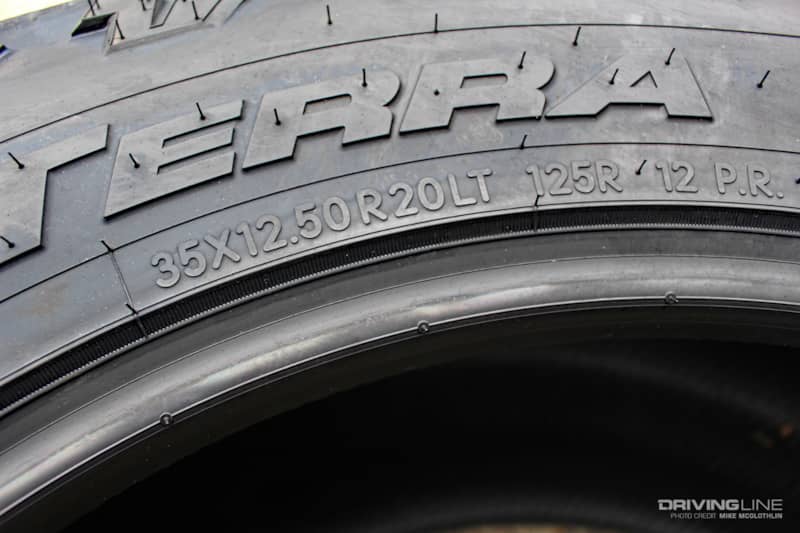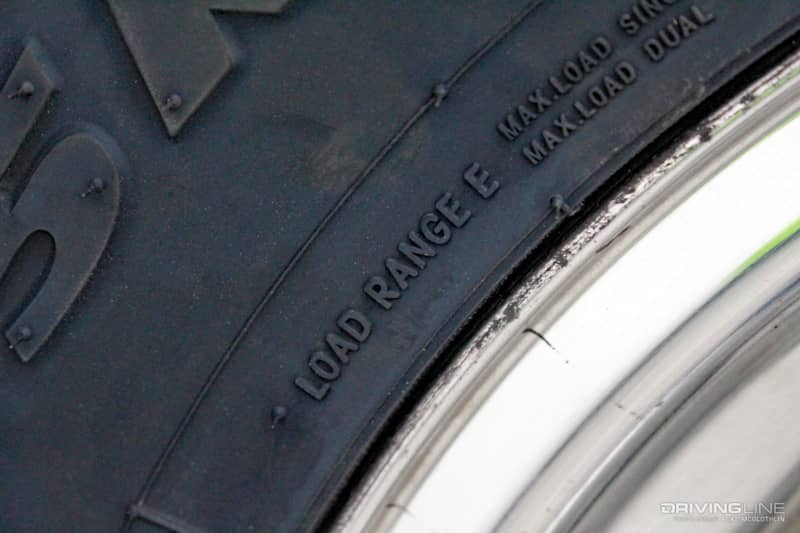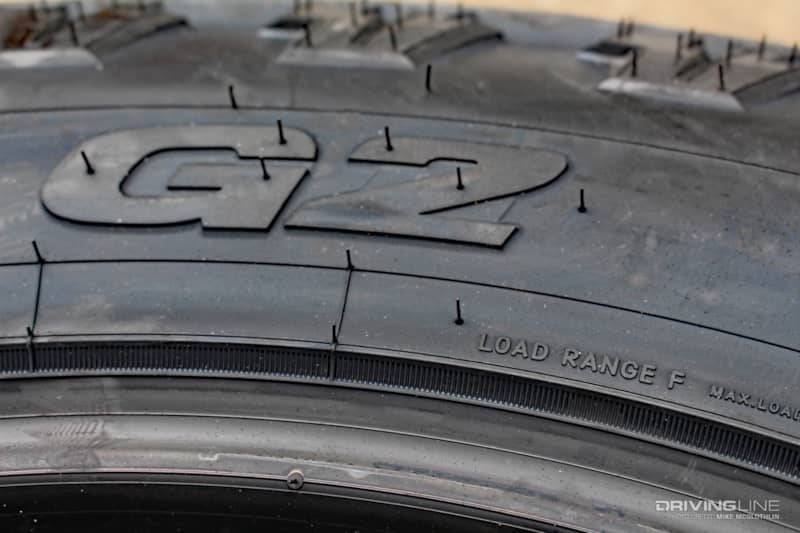Load Index: The Often-Overlooked Tire Spec You Need to Know
Tread style, appearance, size and cost play into most consumers’ tire-buying needs, but how often do we ensure that our new tires will be able to support the kind of weight we’ll be placing them under? Going beyond the common load range letter most of us are accustomed to seeing along the sidewall, it’s time to get acquainted with the term load index and what that number means. Why? As proof that not all tires are created equal, the load range classification can be a bit deceiving in determining a tire’s load carrying capacity. Load index represents the exact weight the tire can safely support. For more on this often-overlooked tire specification, we’ll define load index, illustrate why it’s more important than load range and give you a path to finding yours below.
What Is Load Index?

Load index is the load carrying capacity of your tire. Displayed in both pounds and kilograms, it denotes how much weight each tire can safely support. The tire’s load index is present on the sidewall, oftentimes directly to the right of the tire’s size (above, the “125” is the load index). While a tire’s load index isn’t referred to nearly as much as its load range is, it’s also not as vague (the higher the load index number simply means the higher its load carrying capacity is), giving you a specific load rating instead of a generalized load range. Unsure what your tires’ load index is? You can find convenient load index charts at both Discount Tire and Tires Plus.
What Is Load Range?

In short, load range is an outdated way of listing a tire’s load carrying capacity. Listed on the sidewall as a letter (C through F are most common), it’s based on the tire’s ply rating. The higher the ply count the higher the manufacturer rates the tire’s load carrying capacity. However, with all the advancements in modern tire technology, fewer (yet stronger) plies are used these days, which makes the load range measurement a bit blurry in many instances.
Load Range vs. Load Index

It’s very important that you don’t mistake these two as being the same. While load index is an exact specification, load range can be a bit misleading. For example, one tire manufacturer’s E load range tire may have a load index that is the same or even lower than another brand’s D load range tire. We’ve seen E load range tires with a load index of just 109 (2,271 pounds per tire), but D load range tires with a 118 load index (2,910 pounds). Long story short, load range isn’t the end-all, be-all for a tire’s load carrying ability. Don’t purchase a set of tires for your tow-rig based on load range alone.
The Side-Effects of Overloading A Tire

So what happens when you overload a tire? If you’re lucky, all you notice is the visual sidewall sag present at the bottom of the tire. The tire will look similar to one that’s under-inflated. If you aren’t so lucky, or continue to drive the vehicle with overloaded tires, premature tread wear will inevitably occur. In a worst case scenario, you could experience a blow-out, where—in the midst of such an explosive tire failure—collateral damage can result (such as a damaged fender well liner, fender flare or even the fender itself).
Further Proof That Load Index Is More Important Than Load Range

Another example that showcases why load range isn’t everything can be found by comparing Nitto’s LT295/65R20 Terra Grappler G2, which has an E load range, with the F load range LT305/55R20 version of the same tire. In this case, the LT305/55R20 (though being F-rated) has the lower load index of 125 vs. the 129 load index of the LT295/65R20 G2’s. In this case the F load range tire actually has the lesser load carrying capacity (3,640 pounds vs. 4,080 pounds).
As It Pertains to Maximum Inflation Pressure

Keep in mind that a tire’s peak load carrying capacity can only be achieved at the manufacturer’s maximum inflation pressure. This too is printed on the tire’s sidewall. A few things to keep in mind when airing up to max inflation is to: 1. Air up when the tire is cold (for utmost accuracy and to avoid over-inflating) and 2. Though your load carrying capacity will increase with inflation pressure, ride quality may suffer (for example, there can be a noticeable change in comfort when going from 55 psi up to 80 psi).
As It Pertains to GVWR

If you’ve paid attention to today’s lesson so far you know that, on a single rear wheel truck with a 10,000-pound gross vehicle weight rating (GVWR), the tire information listed here in the size column means they possess a load index of 125. And because a load index of 125 means that each tire can carry 3,638 pounds apiece (14,552 pounds in total), the truck is more than capable of operating at its 10,000-pound GVWR safely. Many of you will also recognize that the second number (122) points out the tires’ load index when used in a dual rear wheel application (3,307 pounds apiece in that instance). In case you were wondering, the “R” means these specific tires are rated for speeds of up to 106 mph.
Stay Safe, Buy Tires With the Same (or Higher) Load Index

When buying new tires always remember that it’s best to stick with tires that have the same load index (or a higher one) that came on the vehicle from the factory. This is especially important for vehicles that tow or haul at or near their maximum GCWR or GVWR capacity. You can go with a bigger tire, provided its approved rim width matches the wheel size on your vehicle, but don’t sacrifice safety by switching to a tire with a lower load index.
More From Driving Line
- Basic tire maintenance begins with regular rotations. Find out how to do it properly here.











